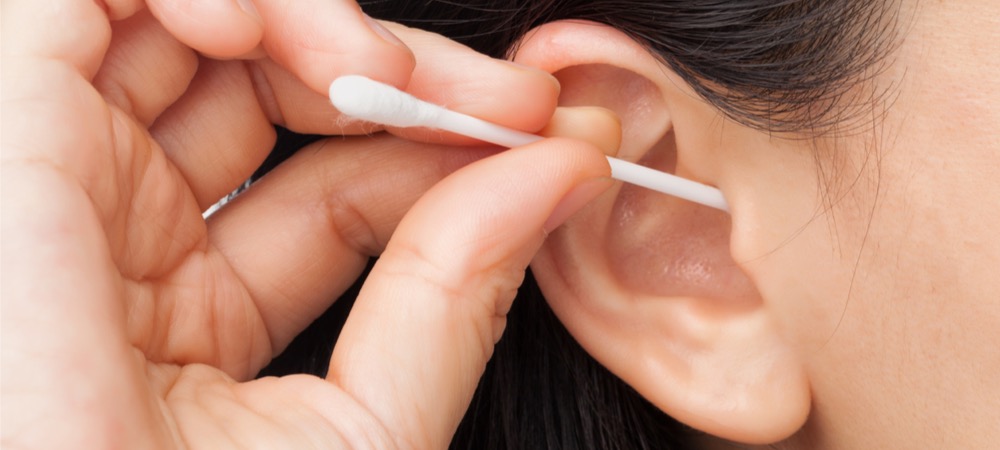7 Possible Causes of Ear Pain
Have you ever come out of the pool after a long day of swimming and felt an intense pain in your ear? Or maybe you were flying in an airplane, and your ears hurt so badly that you had to pop them every few minutes.
No matter the cause, ear pain can be extremely frustrating and uncomfortable. However, by understanding some of the possible causes of ear pain, you can be better prepared to treat the pain and find relief.
1. Middle Ear Infection
The middle ear is the air-filled space behind your eardrum that contains tiny bones (Ossicles) necessary for hearing. A middle ear infection is caused by a virus or bacteria in the ear and often stems from another illness, such as a cold or the flu.
Middle ear infections (Otitis media) are most common among children. About 3 out of 4 children will have at least one episode by the time they are three years old.
Symptoms of a Middle Ear Infection
If you suspect you or your child has a middle ear infection, look for the following symptoms:
- Ear pain when lying down
- Trouble sleeping
- Loss of appetite
- Loss of balance
- Headache
- Fever
- Drainage of fluid from the ear
Treatments for a Middle Ear Infection
Many times, rest, staying hydrated, and taking over-the-counter pain medication are all that are needed to treat a middle ear infection. However, antibiotics may be prescribed if the infection does not clear up after a few days or symptoms become worse.
2. Swimmer’s Ear
Swimmer’s ear (Otitis externa) is a bacterial ear infection caused by prolonged exposure to water. The moisture from the water creates an environment that is perfect for bacteria to grow.
Symptoms of Swimmer’s Ear
After a long day of swimming, you may notice the following symptoms:
- Itchiness inside the ear
- Ear swelling
- Redness inside the ear
- Pain when tugging the outer ear
Preventing Swimmer’s Ear
Swimmer’s ear is preventable by taking a few simple precautions. If you are planning a day at the beach or pool, be sure to use earplugs or a swimming cap to keep water out of your ears.
Drying out your ears after swimming is also important. Gently towel-dry the ear canal and tilt your head to the side to allow water to drain out. If water is still present in the ear, use a hairdryer on the lowest setting to help dry the ear canal.
Swimmer’s Ear Treatment
If you develop swimmer’s ear, check with your doctor to see if ear drops are needed to clear the infection. Remember to never put objects such as cotton swabs or pens into the ear canal when treating ear conditions. Doing so may cause further damage to the ear and increase the risk of infection.
3. Airplane Ear
Airplane ear (Ear barotrauma) occurs when the pressure in your middle ear and the environment are out of balance. This pressure imbalance prevents the eardrum from vibrating normally and results in pain.
Rapid changes in altitude, such as when an airplane rapidly descends, are the most common cause of ear barotrauma. Ear barotrauma can also be caused by driving in the mountains, scuba diving, or hyperbaric oxygen therapy.
Symptoms of Airplane Ear
Airplane ear can occur in one or both ears and often results in:
- Muffled hearing or slight hearing loss
- Stuffiness or a feeling of fullness in the ear
- Moderate ear discomfort
If your airplane ear is severe, you may also experience:
- Severe sharp pain
- Ringing in your ears
- Vertigo
- Bleeding from your ear
- Ruptured eardrum
Preventing Airplane Ear
By opening up your eustachian tubes, you can help relieve ear pressure and prevent airplane ear. Ways to open the tubes include yawning, chewing gum, and sucking on candy.
If these methods do not help, try using the Valsalva maneuver. To do this, close your mouth and nose and gently blow as if you are trying to blow your nose. The Valsalva maneuver will help to equalize the pressure in your ears and open your eustachian tubes.
Airplane Ear Treatments
While preventative measures may suffice for mild cases of airplane ear, severe cases may require antibiotics or surgery. If you are experiencing severe pain, ringing in your ears, or vertigo, it is best to seek medical attention.
4. Ruptured Eardrum
Your eardrum is a thin piece of tissue that separates your middle ear from your outer ear. An eardrum becomes ruptured when there is a tear in the tissue.
Eardrums can become ruptured due to:
- Loud noises
- Changes in air pressure
- Severe head trauma
- Foreign objects entering the ear
- Ear infections
Symptoms of a Ruptured Eardrum
Ruptured eardrums can range from mild to severe and may cause the following symptoms:
- Vertigo
- Nausea or vomiting
- Hearing loss
- Pus-filled or bloody drainage
- Sharp ear pain
Ruptured Eardrum Treatments
A ruptured eardrum will usually heal on its own within a few weeks. However, if you have a severe rupture, your doctor may use an eardrum patch and antibiotics to help the healing process. In some cases, surgery may be required.
5. Earwax Blockage
Your earwax is produced by special glands in the ear canal and serves to protect your ears from bacteria and other foreign objects. Earwax also helps to lubricate and clean the ear canal.
While a small amount of earwax is necessary, too much earwax can cause a blockage leading to ear pain. Earwax blockage commonly occurs when people use objects such as Q-tips or bobby pins to clean their ears. This only pushes the earwax further into the ear canal.
Symptoms of Earwax Blockage
Earwax blockage is often associated with the feeling of fullness in the affected ear. Other possible symptoms of earwax buildup include:
- Earache
- Dizziness
- Decreased hearing
- Ringing in the ears
Earwax Blockage Treatments
If you are experiencing signs or symptoms of an earwax blockage, it is best to consult with a doctor. Earwax removal is a simple process that can be done in a doctor’s office. Earwax removal should never be attempted at home as this can cause further damage to the ear.
6. Temporomandibular Joint Syndrome
Temporomandibular joint (TMJ) syndrome affects the jaw joints and surrounding muscles. TMJ syndrome may be caused by trauma, arthritis, misaligned teeth, or teeth grinding.
Symptoms of TMJ Syndrome
One common symptom of TMJ syndrome is ear pain. This is because the TMJ joint is located in front of the ear. As a result, TMJ syndrome often results in ear pain and aches that may radiate to the temples or side of the head.
Other symptoms associated with TMJ syndrome include:
- Jaw pain
- Headaches
- Locked jaw
- Ringing in your ears
- Tooth pain
TMJ Syndrome Treatments
If you have been diagnosed with TMJ syndrome, your doctor may prescribe pain medication or a mouth guard to help relieve symptoms.
In addition, treatments such as ultrasound, radio wave therapy, and electrical stimulation may also be recommended. Surgery is only recommended in severe cases that do not respond to other forms of treatment.
7. Sinus Infections
Sinus infections happen when the sinuses become inflamed or infected. The sinuses are located behind your cheeks, nose, and forehead. Sinus infections often occur after a cold or flu but can also come from seasonal allergies or structural problems in the nose.
Symptoms of a Sinus Infection
Sinus infections affect the ears because the infection can spread to the eustachian tubes. The eustachian tubes are located between your middle ear and upper throat and help regulate air pressure in the ear. When these tubes become inflamed, it can cause ear pain.
Other symptoms of a sinus infection include:
- Facial pain or pressure
- Headaches
- Nasal congestion or discharge
- Post-nasal drip
Sinus Infection Treatments
If you are suffering from a sinus infection, your doctor may prescribe antibiotics to help clear the infection. In some cases, decongestants, antihistamines, and home remedies may also be used to relieve symptoms.
Contact The Ear and Sinus Institute
Most ear pain can be treated at home. However, if you are experiencing severe ear pain or any other persistent ear and sinus symptoms, it is best to consult with a doctor.
At the Ear and Sinus Institute, we offer comprehensive treatments for all types of ear and sinus problems. Contact the Ear and Sinus Institute today to request an appointment.
Search Blog Posts
Most Recent Keywords
Sinus, Headache, Smell, Breath, Ear, Surgery, Pollen, Sinuplasty, Nose and Sinus, Sleep, Snooring, Procedure,
 Make an Appointment
Make an Appointment








